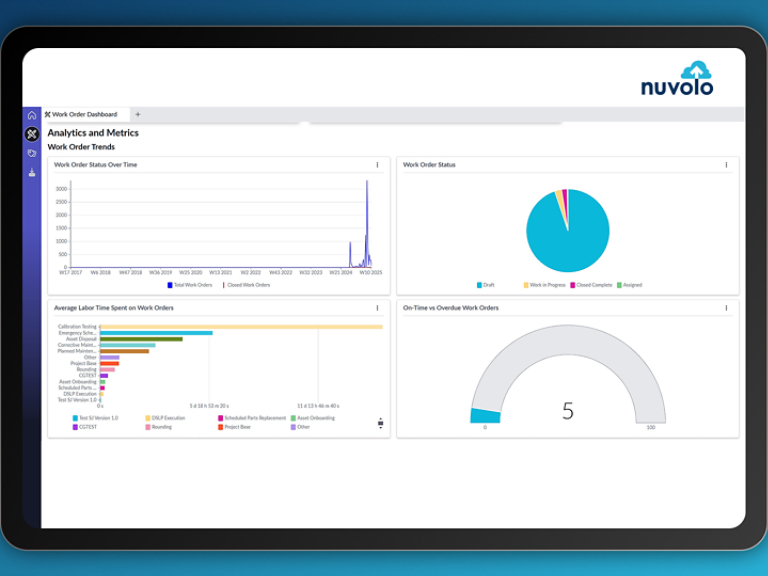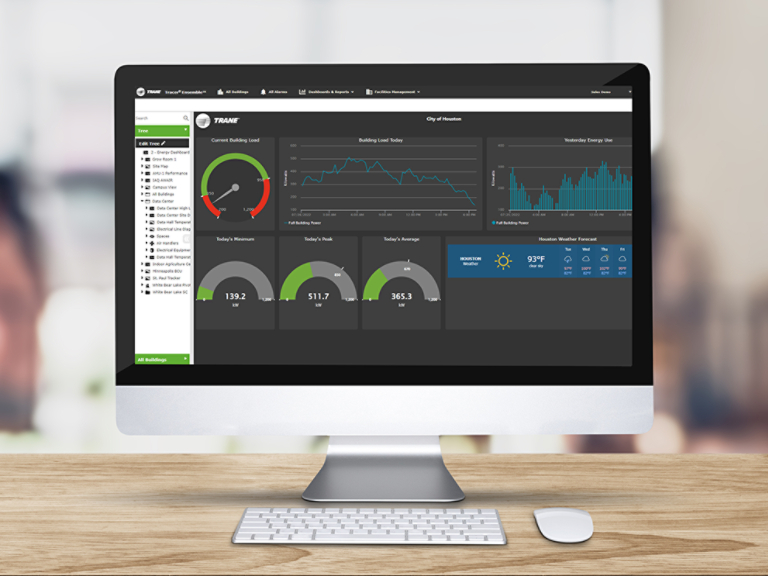Automation system integration connects and coordinates various automated systems within a building, such as HVAC, lighting, and security, to function as a unified whole.
Overview
Your systems, connected.
You choose the best products you can for your building systems, based on technology, features and cost.
That means you probably have different providers for various building systems, like HVAC, lighting and security. That’s no problem for Trane. We’ll get all the components “talking” to each other and sharing data so you can focus on managing your systems and optimizing your building.
-
Open Communication Standards
Tracer Ensemble and Tracer Synchrony use industry open-standard protocols like BACnet, ASHRAE Standard 135, ANSI, and ISO 16484-5. These standards enable the exchange of data between systems, unlocking the full potential of your building automation.
-
Enhanced Data and Insights
Trane's building control solutions provide comprehensive insights and metrics to help you reduce operating costs and improve building efficiency. Access real-time data and analytics to make informed decisions and optimize performance.
-
Compatibility with Any Brand
Trane's systems integration capabilities allow you to mix and match equipment from different providers. Whether it's HVAC, lighting, or security systems, Trane ensures they communicate effectively, providing a robust and powerful building automation system.
FAQs
Your questions about systems integration, answered.
An integrated automation system enhances efficiency and reduces costs by efficiently running operations and optimizing energy management. It provides centralized control and valuable data-driven insights, enabling better decision-making and proactive maintenance.
Trane’s approach to control systems integration is rooted in proven open-protocol best practices vetted by third-party industry experts. Our dedicated team of BAS integration specialists are constantly evolving our standard operating procedures to account for changes in the technology landscape.
Today, that includes leveraging APIs, web calls and AI tools. Our unbiased solution-first mindset will help ensure your building is prepared for tomorrow, no matter what it looks like.
The benefits of integrating your building subsystems through your BAS are nearly limitless. With increased visibility and coordination between your systems, you can expect smarter, more efficient operations. Whether you're chasing sustainability targets, boosting performance, increasing your team’s productivity or enhancing occupant comfort, integration can help you achieve it all—accelerating your path to a truly future-ready building.
Fully integrated HVAC and building automation isn’t our end goal—it’s our starting line.
Lighting, metering and occupancy are part of our standard system integration approach during BAS installation. From there, we’ll work with you to identify the other building subsystems that make sense to integrate based on your needs such as:
- EV charging
- Solar
- Point-of-sale and business operations software
- And more
Outdated building automation systems can be vulnerable to cyberattacks. In fact, more than a third of U.S. critical infrastructure buildings have faced attempted system shutdowns.
Trane system integrations include secure remote access through Trane® Connect™, eliminating the need for firewall openings or VPNs.
Orchestrating the operation of multiple subsystems from multiple manufacturers requires a shared vision. Trane can provide easy-to-use building management software and building automation systems offering you a consolidated view into your building infrastructure—regardless of manufacturer, equipment age or purpose.
Successful control systems integration begins with a clear understanding of your operations and objectives.
The Trane approach is a structured, strategic process designed to make your building operate smarter, more efficiently and with greater coordination between every system. We’ll cover:
- Scope definition and asset planning
- Data access and security definition
- Communications protocol mapping
- Ongoing support and service
Ready to start your journey towards a more fully integrated building?
Download our Integration and Interoperability Evaluation Guide to help you and your team determine if our approach is right for you.









